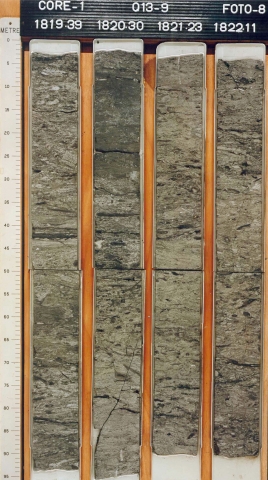Status
Formal (Van Adrichem Boogaert & Kouwe 1993).
Lithological description
White to greyish-orange sandstone, very fine-, rarely up to very coarse-grained, slightly calcareous, argillaceous, locally with abundant glauconite and mollusc shells. In general the interval is intensely bioturbated. Few intercalated thin beds of olive-grey, silty mudstone. On GR logs the member appears as a thick sequence with relatively high readings, resulting from the high clay- and glauconite-content. The member shows considerable variations in thickness.
Depositional setting
Offshore shoal-bars and/or transgressive sheet-sands.
Definition of lower boundary
Unconformably rests upon Triassic or Lower/Middle Jurassic sediments, or upon the lignitic heterolithics of the Delfland Subgroup (Nieuwerkerk or Breeveertien formations).
Definition of upper boundary
Upper boundary is well-defined at the top of the marine sandstone body.
Geographical distribution
Regional correlation
UK: Valhall Formation; GER: ~Minden-Braunschweig-Gruppe; BEL: -.
Age
middle - late Hauterivian.
Origin of name
Named after the Rijn oil field, which produces from this interval in block P15.
References
Van Adrichem Boogaert, H.A. & Kouwe, W.F.P. 1993. Stratigraphic nomenclature of The Netherlands; revision and update by RGD and NOGEPA, Section G, Upper Jurassic and Lower Cretaceous. Mededelingen Rijks Geologische Dienst, 50, 1-80..
Cite as
TNO-GDN ([YEAR]). Rijn Member. In: Stratigraphic Nomenclature of the Netherlands, TNO – Geological Survey of the Netherlands. Accessed on [DATE] from http://acc.dinoloket.nl/en/stratigraphic-nomenclature/rijn-member.
